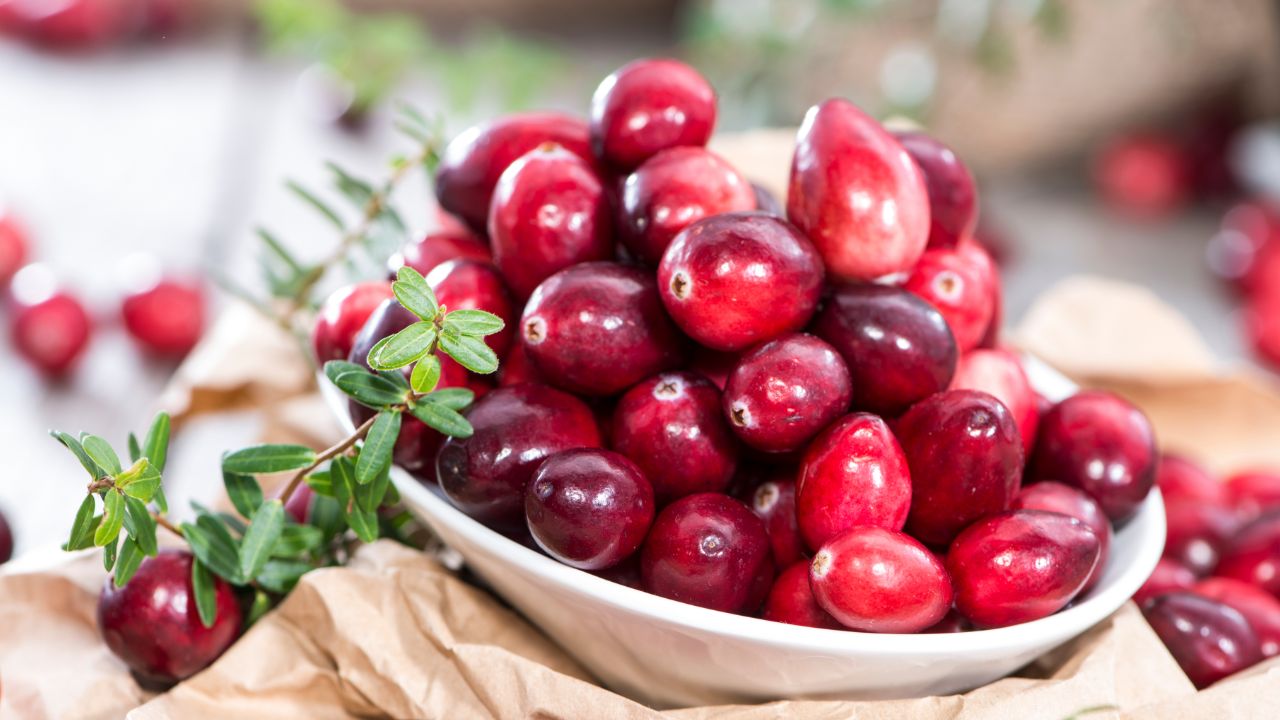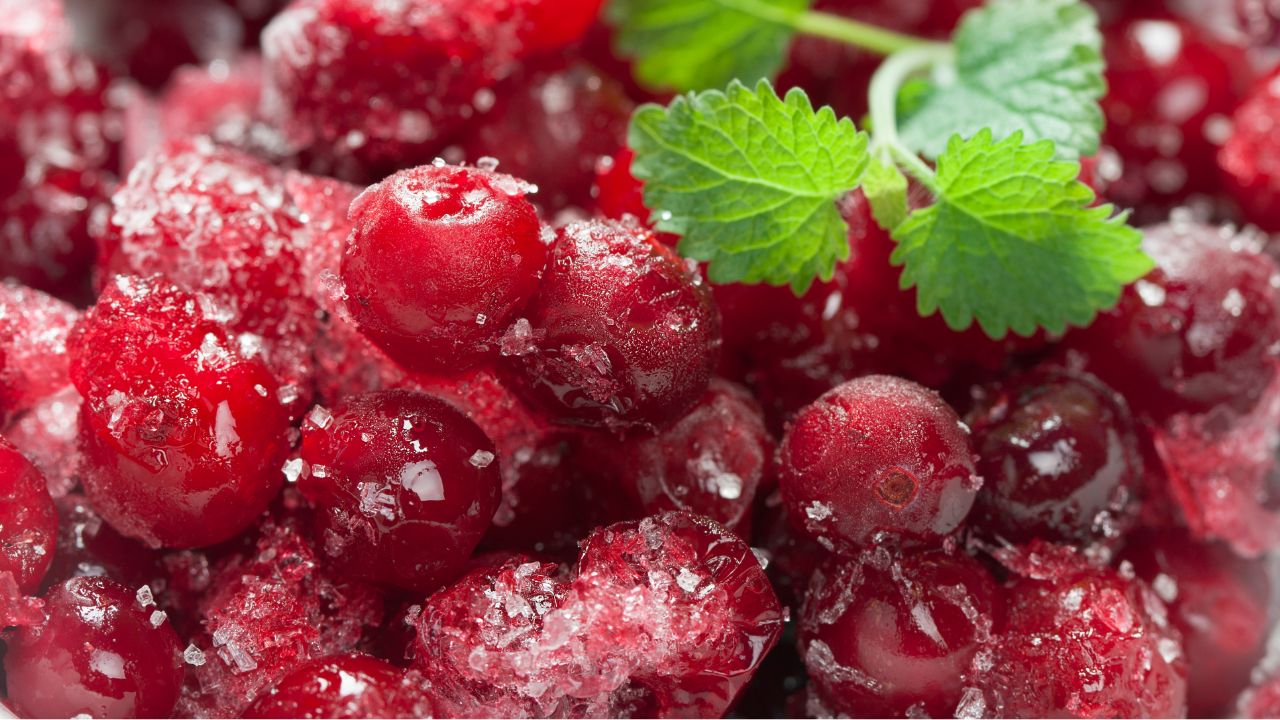Cranberries are a delicious ingredient to use in cooking and baking. Not to mention, they’re a succulent treat all by themselves!
Cranberries are known not only for their deep red color but also for their sweet and tart taste.
These little red berries are also highly nutritional and are an excellent source of antioxidants.
If a recipe calls for frozen cranberries, your first instinct may be to go to the shop and buy frozen varieties.

But the truth is that you can freeze cranberries yourself for a much more cost-effective solution.
To ensure that your frozen cranberries turn out perfectly, here are all the details that you need to know about these fabulous fruits!
Can Cranberries Be Frozen?
Yes, you can freeze cranberries! If you freeze them correctly, cranberries will retain their unique taste.
This is a great solution if you have a ton of cranberries but are unable to get through them all at once.
How Do You Freeze Cranberries?
Freezing cranberries is extremely easy. All you have to do is:
- Thoroughly wash the cranberries in water with a strainer. Leave the cranberries to dry before proceeding.
- Next, remove any cranberries that have expired (continue reading for more information).
- Transfer the cranberries onto a dry kitchen towel that will soak up any remaining moisture.
- Once dry, move the cranberries onto a baking sheet. This should be lined with parchment paper and ideally will have rims to prevent the cranberries from rolling off the side.
- Put the baking tray in your freezer for approximately 3 hours, though ideally a little longer.
- Remove the baking sheet. If any of the cranberries have joined together, simply break them apart with your hands.
- Place the frozen cranberries in an airtight container. Put the lid on top of the container to keep air away from these berries.
- Keep a note of the date and put the cranberries in the freezer. This date is important because it will help you to work out when you should aim to use the cranberries up. Ideally, you should add a label to the container featuring this date.
Why Should You Freeze Cranberries?
Freezing cranberries dramatically lengthen their shelf life. As a result, your cranberries can last for a long time.
This reduces waste, as you may have to resort to throwing out expired cranberries that you’ve kept in the fridge.
This is a sensational solution for leftover cranberries.
Moreover, frozen cranberries will keep all of their delicious flavors even after they have been frozen and thawed.
Therefore, you won’t have to worry about the quality of these beautiful berries declining.
As mentioned, freezing fresh cranberries can also be more budget-friendly than purchasing ready-frozen varieties.
Some recipes also specifically use frozen cranberries instead of fresh ones, so you will need to freeze them in this scenario if you want the recipe to succeed.
How Long Do Frozen Cranberries Last?
In the fridge, fresh cranberries tend to only last between 3 and 4 weeks. However, they will last significantly longer once frozen.
In the freezer, cranberries should last for 8 and 12 months. As you can see, this is much longer than leaving cranberries in the fridge.
Therefore, it’s a worthwhile technique if you are fed up with cranberries continuously going bad.
How Do You Thaw Cranberries?
Defrosting cranberries isn’t necessary, as you can use them when frozen. This is especially true in baking.
However, if you wish to thaw your cranberries, simply:
- Take the cranberries out of the freezer and transfer them to the fridge for a few hours (at least 2).
- Rinse these fruits under chilled water with a strainer.
- Dry your cranberries by leaving them to the side or with a fresh kitchen towel.
How Can You Use Frozen Cranberries?

There are a plethora of fantastic ways of using frozen cranberries, as they add a fresh and juicy taste to any dish.
They will warm up as they cook, meaning that these tasty cranberries soften.
Plus, frozen cranberries are ideal for baking because the color won’t leak, which is an issue that bakers often face when using fresh berries.
There are so many recipes out there for you to try. One of our favorite methods of using frozen cranberries is to add them to a range of baked goods.
For instance, they can be added to muffins, cupcakes, scones, or cookies to enhance the flavor exponentially. Frozen berries are also delightful in fruit pies.
Furthermore, frozen cranberries can be added atop oatmeal, granola, or salad to provide a refreshing fruity twist.
If you wish to opt for something a little healthier, cranberries can be incorporated into mouth-watering smoothies.
They will add vibrant pink colors to the smoothie.
In these brilliant beverages, cranberries work sensationally with other fruits, such as blackberries, blueberries, and bananas (see also ‘How To Freeze Bananas? (The Simple Way)‘), so feel free to experiment!
Can You Freeze Cranberry Sauce?
If you’ve got leftover cranberry sauce from Thanksgiving or Christmas, you might be wondering what you can do with it.
Aside from using it to make a delectable Thanksgiving leftover sandwich, you can also freeze the cranberry sauce so that you can use it at a later date.
All you have to do is place the cranberry sauce in an airtight container or a freezer bag and leave it in the freezer for a few hours.
When you’re ready to use the leftover sauce, simply transfer it to the refrigerator and leave for a couple of hours or preferably overnight.
Just bear in mind that you should aim to use it within 3 months, so it won’t last until the following Thanksgiving!
How Can You Tell If A Cranberry Is Bad?
When they have been kept beyond the expiration date, cranberries will start to expire.
Bad cranberries will be horrible to eat as the taste and texture will have declined.
Often, you can tell if a cranberry has become rancid merely by looking at it or touching it. These are some of the main qualities of expired cranberries:
- Traditionally, cranberries have a firm yet juicy texture. If you notice that a film has developed on the outside of the cranberries, you should avoid them.
- Though cranberries do not usually change color when they expire, color changes can nonetheless be a bad sign. Therefore, it may be best to discard any cranberries that no longer have the deep red color that is heavily associated with these fruits.
- Visible mold growths are an immediate no-no.
- If the cranberries have become wrinkled or their smell has noticeably altered, this usually indicates that they have gone bad.
If your cranberries have gone off, this does not always mean that you cannot use them. Expired cranberries can still be brilliant in smoothies or juices.
This is because you often cannot notice the changes brought on by expiration once these fruits have been crushed.
On the other hand, if your cranberries show any signs of developing mold, it is not recommended that you consume them.
This is because you can be at risk of becoming sick.
Final Thoughts
Freezing cranberries is a superb solution for leftovers. Plus, it’s a super simple method that won’t take long.
If you’ve never tried frozen cranberries before, we urge you to give them a try!
- 15 Traditional Greek Breads - July 31, 2023
- 30 Delicious And Gluten-Free Cookie Recipes - July 29, 2023
- 30 Of The Best European Desserts - July 29, 2023
